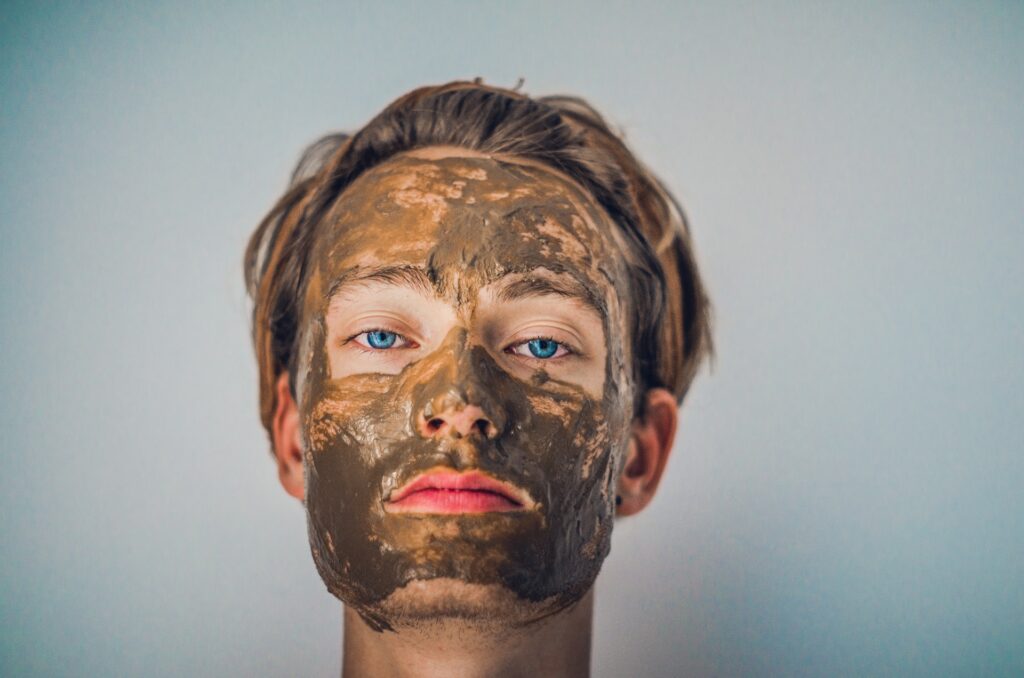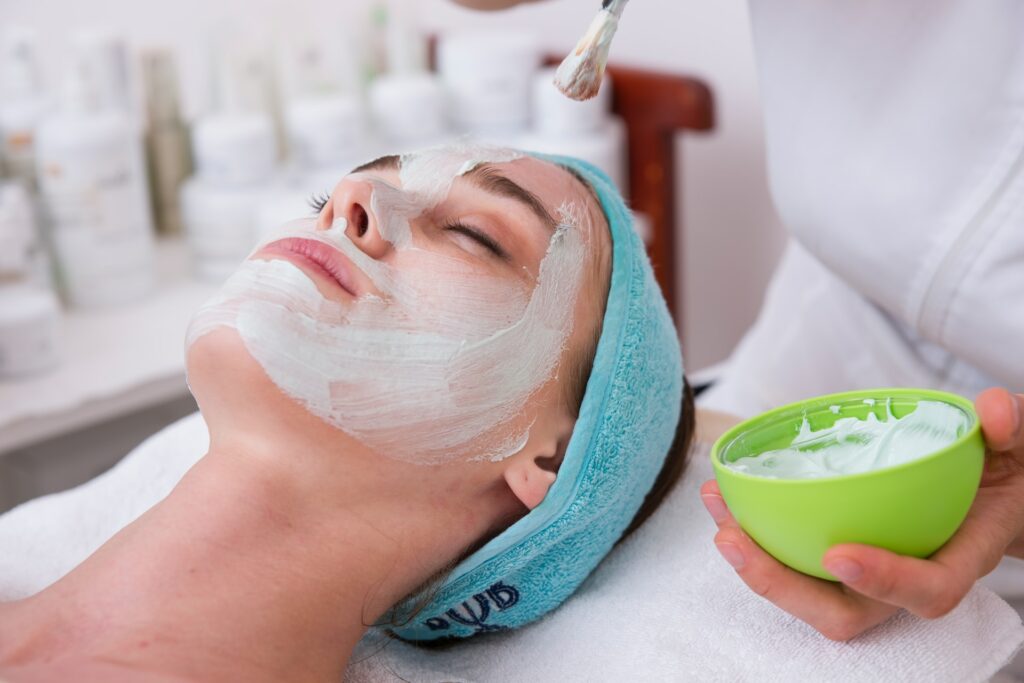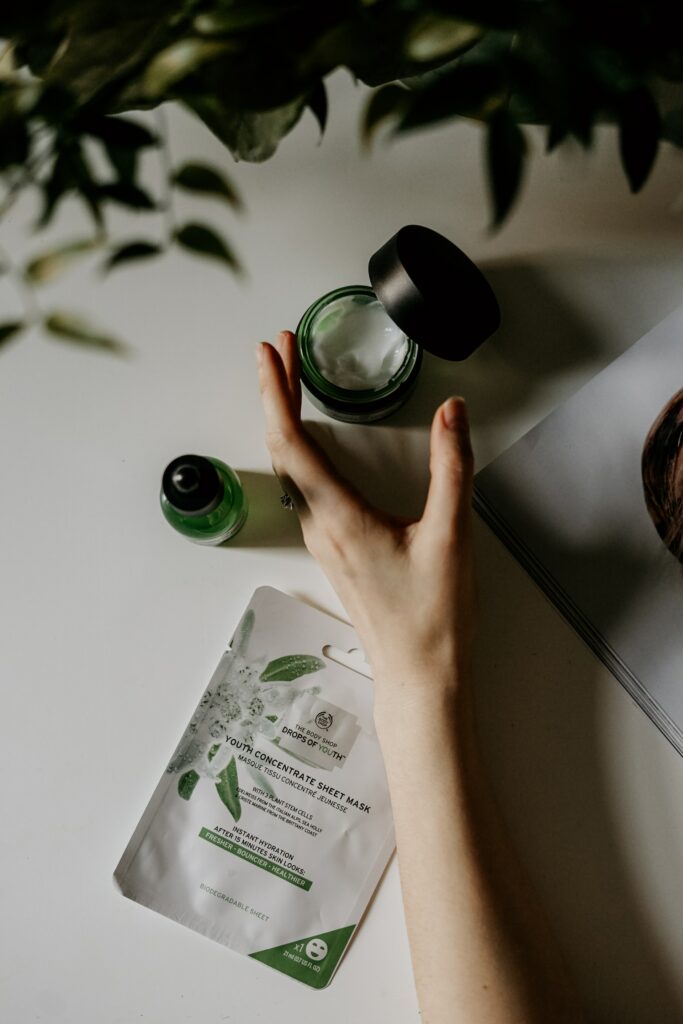Table of Contents
Today, we’re diving into an intriguing topic, one that’s both vital to our skin health and dramatically impacts its aesthetic appeal – Melanin. This wonder pigment gives our skin its unique hue and shields us from harmful ultraviolet radiation. However, an orchestra of even the sweetest instruments can play a discordant tune if not properly conducted, and so can our melanin. Excess melanin production can lead to hyperpigmentation, dark spots, and uneven skin tone, which most of us have wrestled with at some point.
In this post, we’re tackling effective ways to control excess melanin in your skin. We’ll navigate the whys and hows of melanin production, delve into the factors that can tip it off balance, and, most importantly, unveil the science-backed strategies to maintain its harmony. Whether you’re new to the world of skincare or a seasoned skincare enthusiast, prepare for an insightful journey filled with tips and tricks to illuminate your path toward even-toned, radiant skin.
So, grab your notebook and a warm cup of tea, and let’s journey into the skin-deep world of melanin mastery. Your journey to luminous, balanced, and healthier skin starts here!
Embrace Your Glow: The Skincare Guide to Managing Melanin
Hello, my beauty-loving comrades! Have you ever caught yourself in the mirror and noticed patches of skin seeming a bit darker than the rest? I know I have, and trust me, it feels like an unwanted surprise party on your skin. This unexpected guest is usually due to excess melanin production – a journey every skin type is familiar with.
A Colorful Story: Understanding Melanin
Think of skin color as a masterpiece painted by nature, with each of us boasting a unique palette. This palette is gifted to us by a pigment called melanin. Our skin carries two primary types of melanin: Eumelanin, the brown or black pigment, and Pheomelanin, with its reddish-yellow hues. The blend and concentration of these pigments create our distinct skin tones.
Melanin: The Unsung Hero of Our Skin

Melanin isn’t just the artist behind our skin tone; it’s also our skin’s very own superhero, protecting us from the sun’s harmful ultraviolet radiation. Dr. Zeel Gandhi, Chief Ayurvedic Doctor at Vedix, explains it perfectly: “When our skin gets an over-dose of UV exposure causing DNA damage, it ups the production of melanin to prevent further harm. This defense mechanism, known as ‘melanogenesis,’ often results in tanning or skin darkening.”
This might bring back memories of that last beach vacation where you returned a darker shade. But don’t worry; even if it takes a while, your skin will return to its natural tone. And guess what? Studies have shown that individuals with darker skin tones have lower skin cancer risk, so there’s a silver lining to the sun-touched glow!
Melanin Overdrive: What Kicks It Off?
While sun-soaking is the usual suspect for boosted melanin levels, other factors like hormonal imbalances, skin inflammation, aging, and certain vitamin deficiencies can also up the ante. Hormonal changes during pregnancy can even influence melanin production in some women. And let’s not forget the rare Addison’s disease that can result in hyperpigmentation, particularly in sun-exposed areas like the face, neck, and hands.
Melanin & You: A Permanent Relationship?

Now, can we tweak our melanin levels permanently? The answer could be more precise. Our natural skin tone is a genetic gift influenced by our melanocytes’ size, shape, distribution, and activity. While we can temper melanin production to some degree through in-clinic procedures and Ayurvedic treatments, the changes are only temporary if they align with our predetermined genetic levels. But don’t be discouraged; these treatments can effectively help manage skin pigmentation disorders.
Taking the Reins: How to Reduce Melanin?

- The Ayurvedic Approach
- Harnessing the Power of Herbs
Ayurveda, an ancient Indian medicinal system, celebrates certain herbs termed ‘Varnya Gana.’ These botanical gems can inhibit the tyrosinase enzyme, the mastermind behind melanin production. Incorporating Ayurvedic skincare products with these ‘Varnya’ herbs, based on your dosha levels, can naturally help reduce excess melanin production and deposits in your skin.
So, dear glow-seekers, we’ve come to the end of today’s skin science session. Remember, our goal isn’t to alter our skin color but to celebrate it while ensuring its health and vibrancy. Here’s to embracing our unique glow and helping it shine brighter, one skincare tip at a time!
Lighting Up Your Skin: A Holistic Approach to Managing Melanin

Hello radiant souls! Have you ever wished for a magic potion that could give you an even, glowing skin tone? After all, you might not need that magic potion because the secret might be moving your body, eating right, and getting a little help from Mother Nature. Let’s explore these together!
Yoga: A Gateway to Glowing Skin
Yoga isn’t just about touching your toes or mastering the tree pose. It’s also about flooding your bloodstream with oxygen and increasing circulation to your skin. I remember the first time I tried yoga; I couldn’t believe the post-session glow! It felt like my skin had been detoxed and re-energized.
Unleashing The Skin Benefits of Yoga

Here is some yoga poses that do wonders for your skin and help balance melanin production:
- Surya Namaskar (12-step sun salutation poses)
- Dhanurasana (bow pose)
- Adho Mukha svanasana (downward-facing dog pose)
- Halasana (plow pose)
- Sarvangasana (shoulder stand pose)
- Pranayama and meditation on Padmasana
- Shavasana (corpse pose)
Remember to always practice under the guidance of a trained yoga instructor.
Hydrate, Hydrate, Hydrate: The Power of Water Therapy
Ever heard the saying, “You are what you drink?” Nothing could be more accurate when it comes to hydration. Keeping our bodies well-hydrated allows our blood to deliver fresh oxygen to our organs, flushing out toxins and resulting in healthy, supple skin.
Ayurveda and Water: A Guideline
Ayurveda, the ancient science of life, offers us a beautiful framework for water consumption:
- Drink 1 to 1.25 liters of lukewarm water first thing in the morning.
- Follow up your yoga or workout session with another 1 to 1.25 liters of water, but leave a 1-hour gap before breakfast.
- Maintain a gap of at least 2 hours between meals, and only drink water an hour before or after meals.
- Always sit down when drinking water and avoid gulping it down in large volumes.
- Ice-cold water is a no-no as it disrupts your digestive pitta.
Try infusing your water with lemon for a flavor kick, but steer clear of alcohol and caffeinated beverages.
Home Remedies: Natural Aids for Skin Lightening

While yoga and hydration lay the foundation, home remedies can speed up skin-lightening. Here are my favorite DIY recipes:
- Honey and Lemon: A classic combo! Mix equal parts and apply it to tanned skin areas. Rinse off after 15-20 minutes.
- Turmeric, Curd, and Rosewater: A fragrant and effective paste that works wonders on your skin.
- Tomato Puree and Rosewater: Blend a tomato and add a few drops of rosewater for a refreshing face mask.
- Potato and Lemon Juice: Blend a potato, add a few drops of lemon juice, and get yourself a potent skin-lightening agent.
- Aloe Vera: Extract fresh aloe vera gel, apply it to your skin, and let the plant’s magic work for half an hour.
Eat Your Way to Less Melanin
Antioxidants are your best buddies in reducing excessive melanin deposits. Fill your plate with vibrant fruits and vegetables such as oranges, berries, papaya, kiwi, guava, lemons, spinach, carrots, and broccoli. Remember to sip on some green tea to boost glutathione, which helps lower melanin production.
Medical Interventions: When to Seek Professional Help

In some instances, a trip to the dermatologist might be necessary. One popular treatment is Laser Therapy, which uses light pulses to decrease melanin in the treated areas. However, consult your dermatologist before opting for any medical treatments, as they can sometimes lead to side effects such as scarring and infections.
Well, there you have it, lovely people! A holistic approach to managing melanin and lightening your skin tone. Remember, this isn’t about changing who you are but about taking the best possible care of the skin you’re in. Let’s celebrate our unique glow and shine brightly, one skin-loving step at a time!
Diving Deeper: Professional Treatments for Melanin Management
If home remedies aren’t quite doing the trick, fear not! There are more potent treatments available that you can discuss with your dermatologist.
Chemical Peels: A New Layer of Glow
Chemical peels use potent substances like lactic acid or glycolic acid to reduce existing melanin deposits. These treatments have been a game-changer for many, myself included. I had stubborn pigmentation that wouldn’t fade until I opted for mild chemical peels. It felt like unveiling a fresh, new layer of skin!
Over-The-Counter Products: The Power of Topicals
A whole world of skin-lightening creams and ointments can be picked up at your local pharmacy. They contain potent ingredients known as tyrosinase suppressants, inhibiting the melanin production enzyme. These include:
- Retinoids
- Kojic acid
- Vitamin C
- Hydroquinone
- Azelaic acid
- Glycolic acid
Always remember to consult your doctor before starting any new skin treatment. Even though these are available over the counter, they can cause side effects such as irritation, redness, dryness, and itchiness.
Melanin and Pregnancy: Tips to Curb Hyperpigmentation

Ah, pregnancy! A beautiful time when your body performs the miracle of life, and sometimes that includes producing a bit more melanin than usual. The rapid changes in estrogen hormone levels during pregnancy can increase melanin production, causing darkened skin patches.
Having been through this journey twice, here are some of my tried-and-tested tips:
- Watch Your Diet: Certain foods like multi-grain bread and flax seeds can increase estrogen levels, so limiting them during pregnancy is best. Instead, load up on vitamin B6-rich foods like walnuts, whole grains, bananas, and seafood. Also, remember fiber and folic acid!
- Sun Protection: As much as we love soaking up the sun, it’s best to stay indoors around noon when the sun is at its peak. However, some morning sun can do wonders for your Vitamin D levels.
- Window Warnings: Avoid sitting near windows for long periods, as the sun’s rays can still reach you.
- Sunscreen Is Your BFF: Sunscreen with an SPF of at least 30 should become a part of your daily routine.
- Wear Light, Protective Clothing: Dressing in light-colored clothing that covers most of your body can provide an extra layer of protection.
So there you have it, radiant beauties! Remember, every skin type and color is beautiful. These tips are merely for those moments when you feel like switching things up a bit or dealing with sudden changes like pregnancy-related pigmentation. Keep shining your light brightly!
What Are Some Ayurvedic Treatments That Can Help Manage Skin Pigmentation Disorders?
Ayurveda, an ancient holistic healing system, has a treasure trove of remedies and practices that can be beneficial in managing skin pigmentation disorders. Ayurveda addresses skin issues through topical applications, dietary modifications, and lifestyle practices.
- Ayurvedic Herbs: Several herbs are known for their skin-brightening and healing properties. Some of these include:
- Manjistha (Rubia cordifolia): Manjistha is renowned for its blood-purifying properties and is often used in Ayurvedic medicine to reduce hyperpigmentation.
- Turmeric (Curcuma longa): This golden herb needs no introduction. Turmeric’s anti-inflammatory and antioxidant properties can reduce melanin production and provide a healthy glow to the skin.
- Aloe Vera (Aloe barbadensis miller): Aloe Vera is a potent Ayurvedic herb known for its soothing and healing properties. It can help to lighten dark spots and improve overall skin health.
- Ayurvedic Diet: According to Ayurveda, a balanced diet plays a crucial role in maintaining skin health. Foods rich in antioxidants, like berries, oranges, spinach, and green tea, can help reduce melanin production.
- Ayurvedic Lifestyle Practices: Regular exercise, good sleep, and stress-free life can also help control pigmentation. Yoga and meditation are particularly recommended for their holistic benefits.
- Ayurvedic Face Masks: Face masks made with Ayurvedic ingredients can help lighten hyperpigmentation. A sandalwood, turmeric, and rose water paste can be beneficial. Similarly, a lemon juice and honey mask can also lighten skin pigmentation.
- Ayurvedic Oil Massage: Regular massage with Ayurvedic oils like coconut or almond oil can improve circulation, promote cellular regeneration, and lighten pigmentation.
While Ayurveda offers many treatments, it’s important to remember that results often take time, and consistency is critical. Always perform a patch test before using any new herbal product, and if conditions persist or worsen, it is advisable to consult with a healthcare professional or an Ayurvedic practitioner.
3 Skincare Products I Really Rate
Let’s delve into some product-specific recommendations and skincare routines that could help manage excess melanin production.
- Serums: Serums can deliver potent active ingredients right into your skin. For example, consider the “TruSkin Vitamin C Serum” (Price: Around $20). This high-performance serum is rich in Vitamin C, known to inhibit melanin production, lighten hyperpigmentation, and brighten the skin.
- Sunscreen: Sunscreen is a must for everyone, especially for those dealing with hyperpigmentation. It helps protect the skin from UV radiation which can exacerbate melanin production. One fantastic product is the “EltaMD UV Clear Broad-Spectrum SPF 46” (Price: Around $37). This sunscreen offers broad-spectrum protection and also contains niacinamide, a powerful ingredient known to reduce discoloration.
- Exfoliation: Regular exfoliation can help get rid of dead skin cells, which can accentuate the appearance of pigmentation. “Paula’s Choice Skin Perfecting 2% BHA Liquid Exfoliant” (Price: Around $30) is a highly-rated exfoliant that can help brighten your complexion over time.
Now, let’s walk through a simple skincare routine you could follow:
Morning Routine
- Cleanse with a gentle, hydrating cleanser to prepare your skin for the day.
- Apply a few drops of your chosen serum, like the TruSkin Vitamin C Serum.
- Allow your skin to absorb the serum for a few minutes before moving onto the next step.
- Apply sunscreen – a generous amount to cover all exposed areas of your skin.
Evening Routine
- Cleanse your skin to remove the dirt, oils, and makeup accumulated during the day.
- Exfoliate with Paula’s Choice Skin Perfecting 2% BHA Liquid Exfoliant about 2-3 times a week. Remember, over-exfoliation can irritate your skin and possibly lead to more pigmentation, so moderation is key.
- Follow up with your serum. At night, your skin undergoes its natural repair process, making this a great time to nourish it with active ingredients.
- Finish off with a hydrating, non-comedogenic moisturizer. Hydrated skin is healthy skin, and maintaining your skin’s moisture barrier can help it stay resilient and more responsive to your skincare routine.
Remember, consistency is key in skincare. By sticking to a regular routine, you’re more likely to see results over time. And of course, always do a patch test when trying out new products!
Conclusion
Well, that wraps our deep dive into melanin management. From Ayurvedic treatments to professional procedures, you’re now armed with tips and advice to tackle those pesky pigmentation problems. But remember, any change in your skin regimen, especially when it involves potent treatments, should always involve consultation with a skincare professional to avoid potential risks.
Remember that our diversity in skin tones is what makes us uniquely beautiful. Each of us is a masterpiece, a perfect blend of nature’s pigments. But, if you wish to manage excess melanin, I hope this guide has shed some light on your options.
Let’s continue embracing our unique beauty, nourishing our skin, and owning our glow because there’s nothing more attractive than confidence. And whatever step you take next, remember: you are beautiful just as you are! Here’s to happy skin and feeling fabulous, inside and out!
Feature image by Rachel Claire via Pexels




